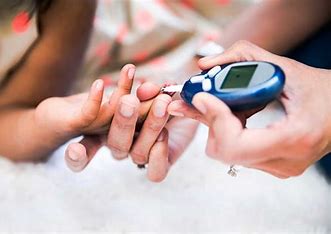Diabetes Mellitus is a widespread chronic condition that affects millions of people globally. It occurs when the body’s ability to regulate blood sugar (glucose) is impaired, leading to dangerously high or low blood sugar levels. Understanding its causes, symptoms, and treatment options is essential for managing this condition and improving quality of life.
In this blog, we’ll explore the different aspects of Diabetes Mellitus, from its causes and symptoms to available treatment options and how you can manage the condition effectively.
What is Diabetes Mellitus?
Diabetes Mellitus refers to a group of diseases that impact how your body processes blood sugar. There are three main types of diabetes:
- Type 1 Diabetes: An autoimmune condition where the body attacks and destroys the insulin-producing cells in the pancreas. This type typically develops in childhood or early adulthood.
- Type 2 Diabetes: The most common form, where the body becomes resistant to insulin or doesn’t produce enough. It often develops later in life and is linked to lifestyle factors.
- Gestational Diabetes: Occurs during pregnancy and typically disappears after childbirth but increases the risk of developing Type 2 diabetes later in life.
Causes of Diabetes Mellitus
Several factors contribute to the development of diabetes. These include genetic, lifestyle, and environmental factors.
Genetic Factors
Family history plays a significant role in the development of diabetes. If you have close relatives with diabetes, you are more likely to develop the condition yourself. Genetic mutations can impair the body’s ability to produce or respond to insulin, increasing the risk of Type 1 and Type 2 diabetes.
Lifestyle Factors
Obesity, poor diet, and lack of physical activity are major contributors to the development of Type 2 diabetes. Excess weight, especially around the abdomen, makes the body more resistant to insulin. A diet high in processed foods, sugary drinks, and unhealthy fats can also increase the risk.
Other Causes
In some cases, other health conditions, such as polycystic ovary syndrome (PCOS), high blood pressure, or high cholesterol, can increase the risk of developing diabetes. Hormonal imbalances, autoimmune diseases, and even pregnancy can trigger gestational diabetes.
Symptoms of Diabetes Mellitus
Diabetes often presents with noticeable symptoms, although they may vary depending on the type of diabetes. Common symptoms include:
- Excessive thirst and frequent urination due to high blood sugar levels.
- Fatigue and feeling weak, as the body struggles to use glucose for energy.
- Blurred vision, caused by changes in fluid levels affecting the eyes.
- Slow-healing wounds or frequent infections.
- Unexplained weight loss, especially in Type 1 diabetes, where the body starts using muscle and fat for energy.
If left untreated, diabetes can lead to serious complications such as heart disease, kidney damage, nerve damage, and blindness.
Diagnosing Diabetes Mellitus
Diabetes is diagnosed through several blood tests. Common tests include:
- Fasting blood glucose test: Measures blood sugar levels after fasting for at least eight hours.
- A1C test: Reflects your average blood sugar level over the past two to three months.
- Oral glucose tolerance test: Measures blood sugar levels before and after drinking a sugary liquid.
For a diagnosis, blood sugar levels higher than normal indicate the presence of diabetes. It’s important to consult a healthcare provider if you experience symptoms or are at risk of developing the condition.
Treatment Options for Diabetes Mellitus
There’s no cure for diabetes, but it can be effectively managed with lifestyle changes, medications, and regular monitoring. Treatment depends on the type of diabetes and its severity.
Lifestyle Modifications
Healthy eating, regular exercise, and maintaining a healthy weight are the cornerstone of diabetes management. A balanced diet rich in whole grains, vegetables, lean proteins, and healthy fats can help regulate blood sugar levels.
Exercise improves insulin sensitivity, helping the body use glucose more efficiently. Even moderate activities like walking, cycling, or swimming can make a significant difference.
Medications
- Type 1 Diabetes: Insulin therapy is necessary, as the body cannot produce insulin. This can be administered through injections or an insulin pump.
- Type 2 Diabetes: Medications such as metformin are commonly prescribed to help the body use insulin more effectively. In some cases, insulin may be necessary.
Monitoring
Regular blood sugar monitoring is crucial for managing diabetes. It helps keep blood sugar levels in check and allows for adjustments in diet, exercise, and medication. Using a glucose meter or continuous glucose monitor (CGM) can provide real-time data.
Alternative Treatments
Some individuals explore herbal remedies, such as cinnamon, bitter melon, or fenugreek, for managing blood sugar. However, it’s essential to consult a healthcare professional before trying any alternative treatments to ensure they don’t interfere with conventional treatments.
Prevention and Management
Prevention is the best way to avoid the complications of diabetes. Maintaining a healthy lifestyle, eating a balanced diet, and staying active can help prevent Type 2 diabetes. For those with diabetes, management involves:
- Monitoring blood sugar levels regularly.
- Adhering to prescribed medications and insulin therapy.
- Avoiding sugary snacks and drinks.
- Maintaining a healthy weight.
Conclusion
Diabetes Mellitus is a serious but manageable condition. By understanding the causes, recognizing the symptoms, and adhering to appropriate treatment options, individuals with diabetes can lead healthy and fulfilling lives. Early diagnosis and consistent management are key to preventing complications. If you suspect you might have diabetes or are at risk, consult a healthcare provider to get tested and receive personalized advice.

